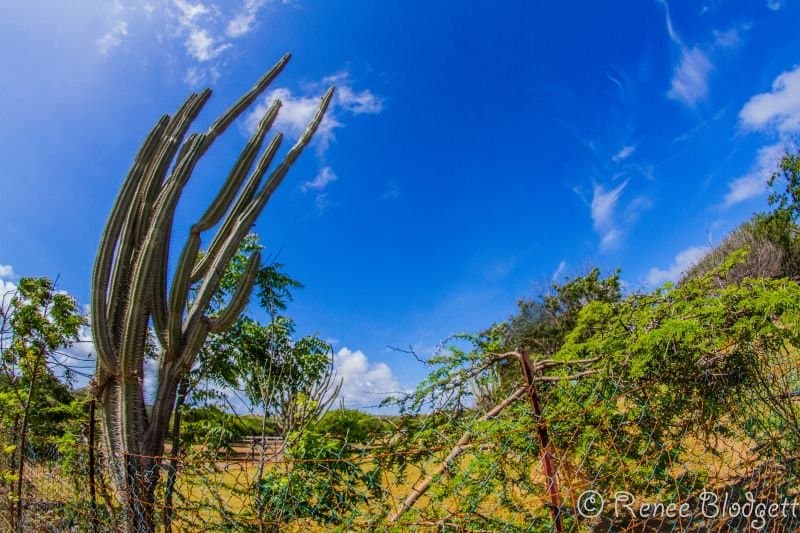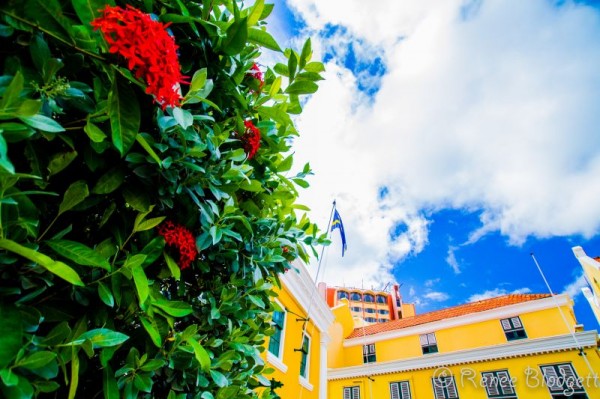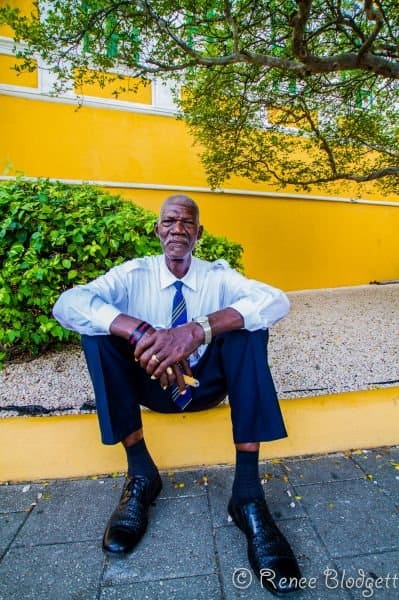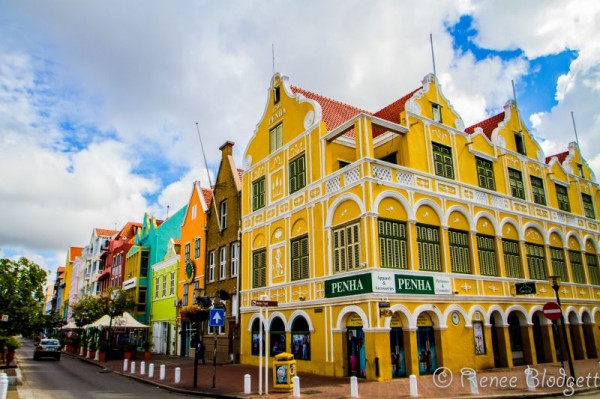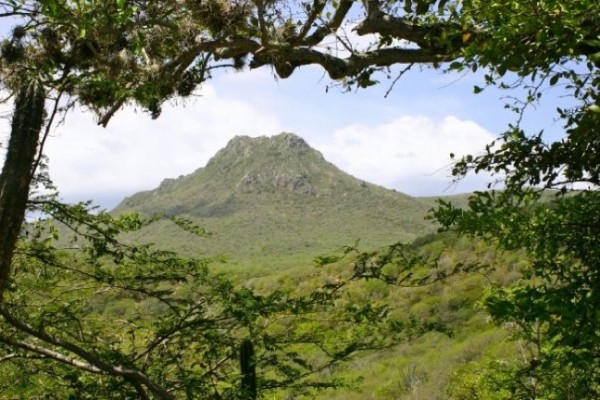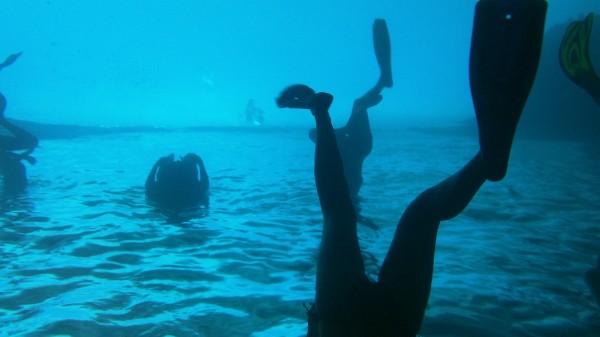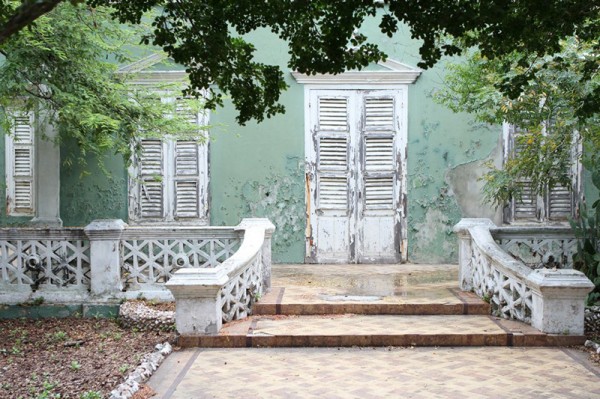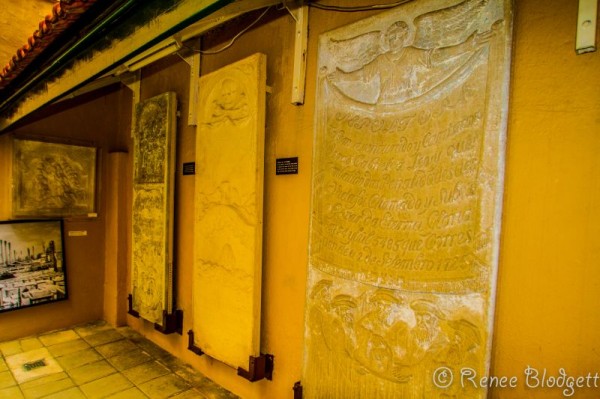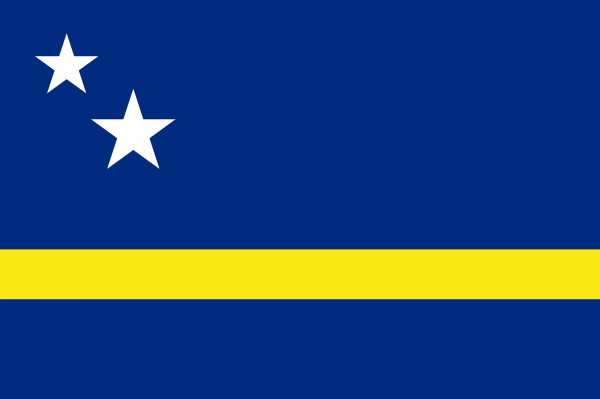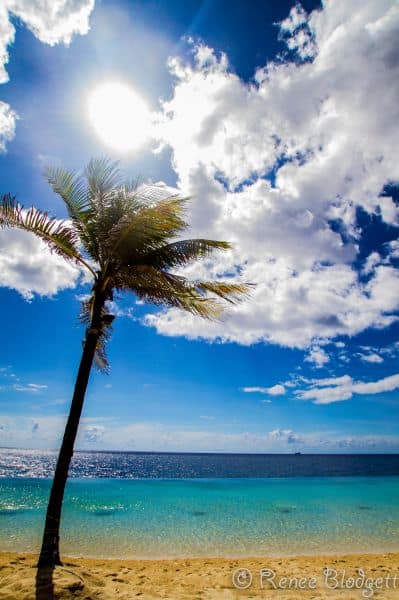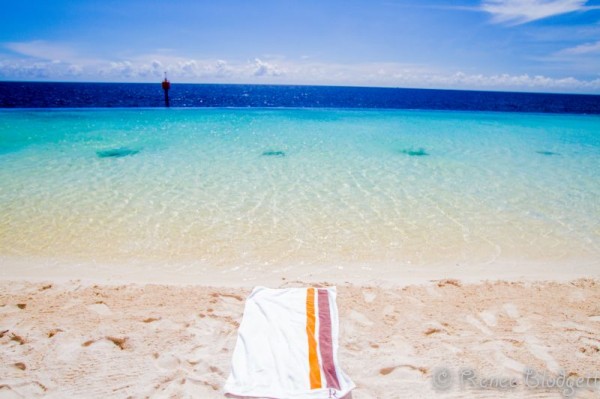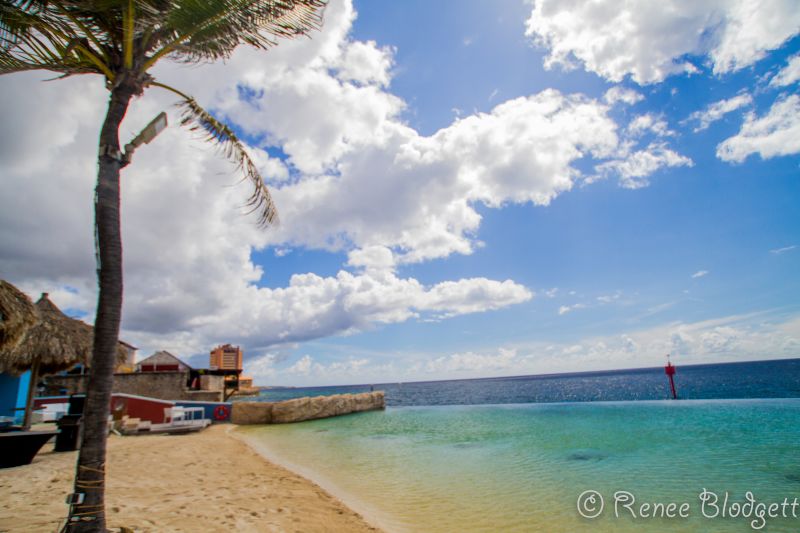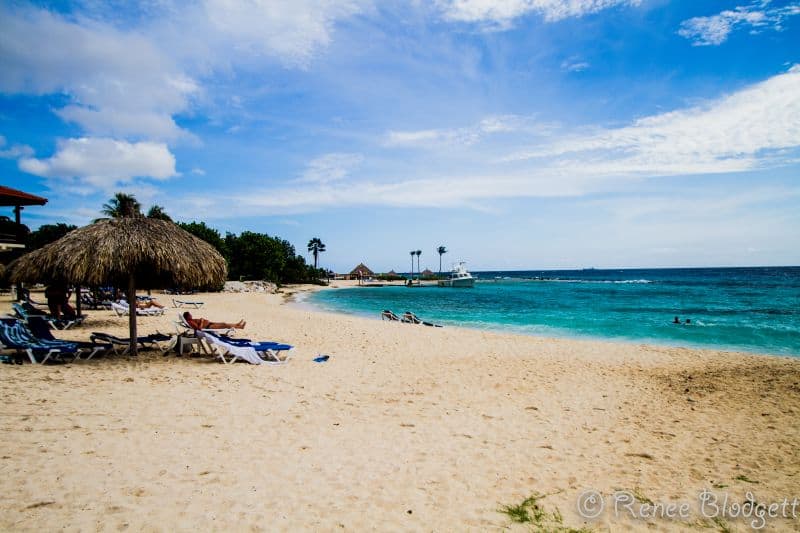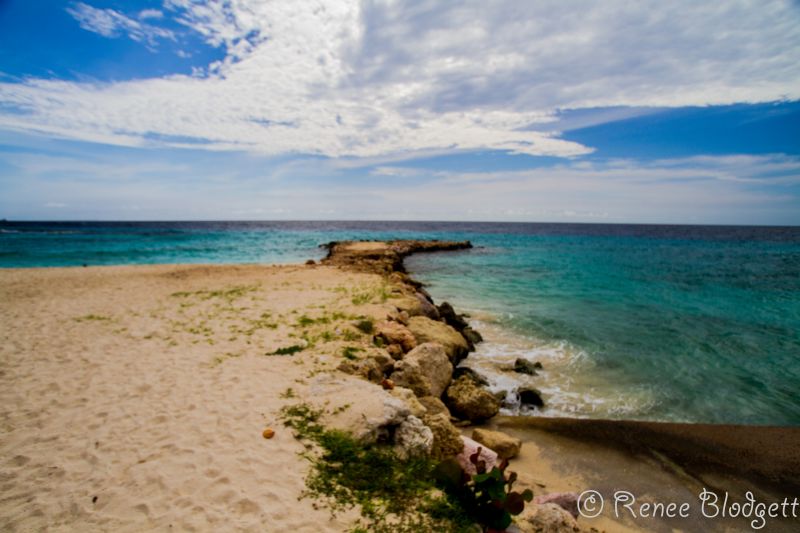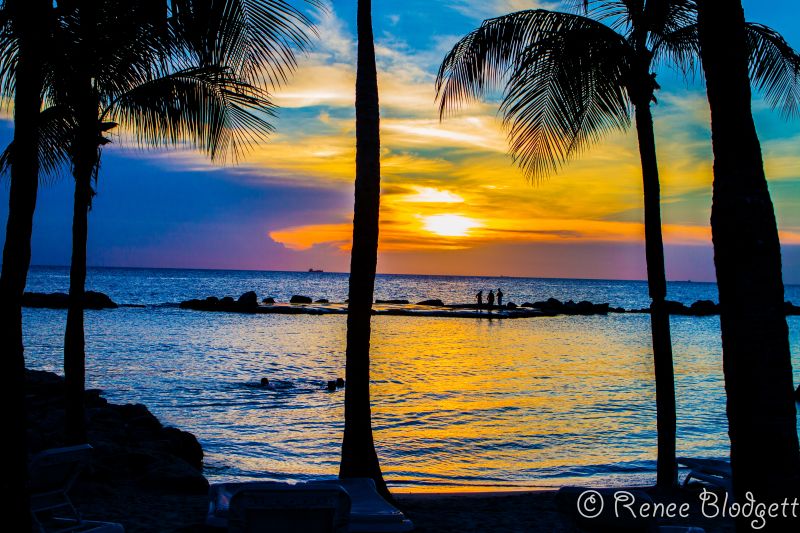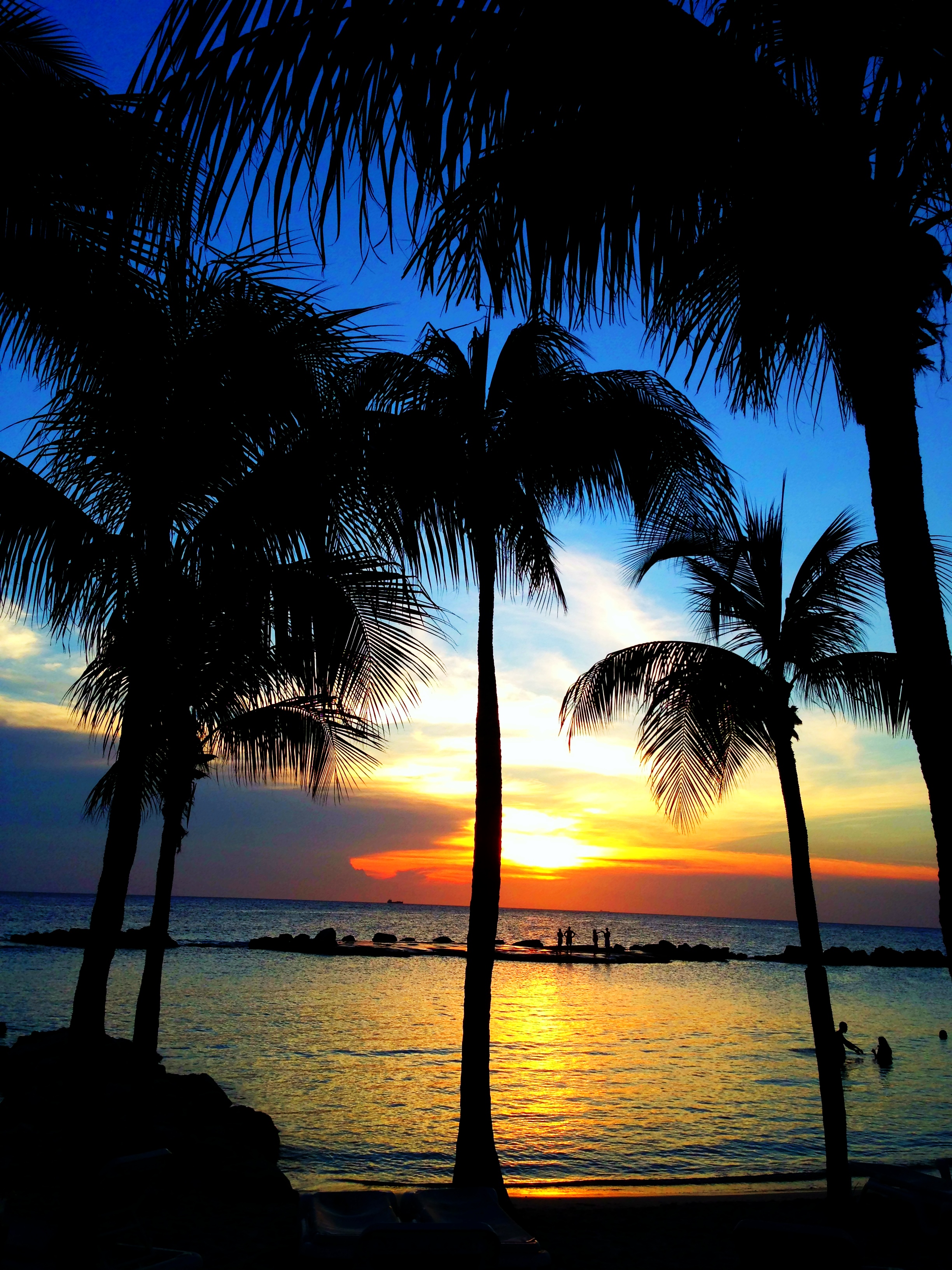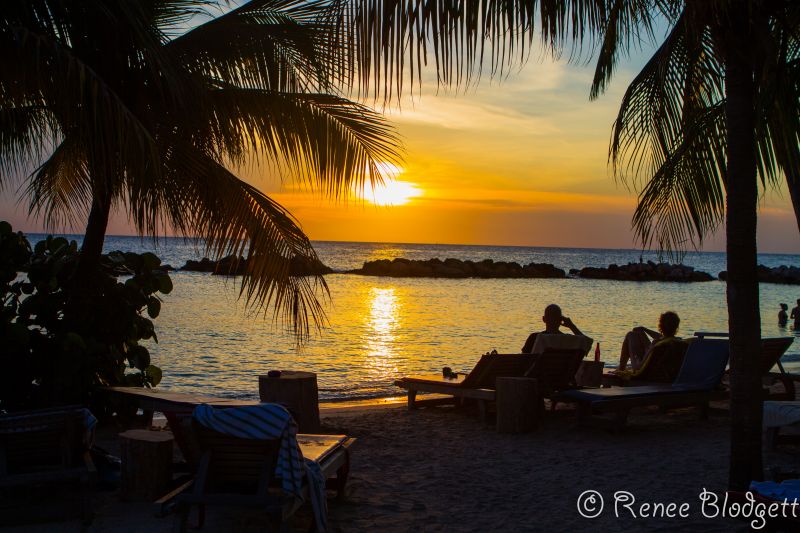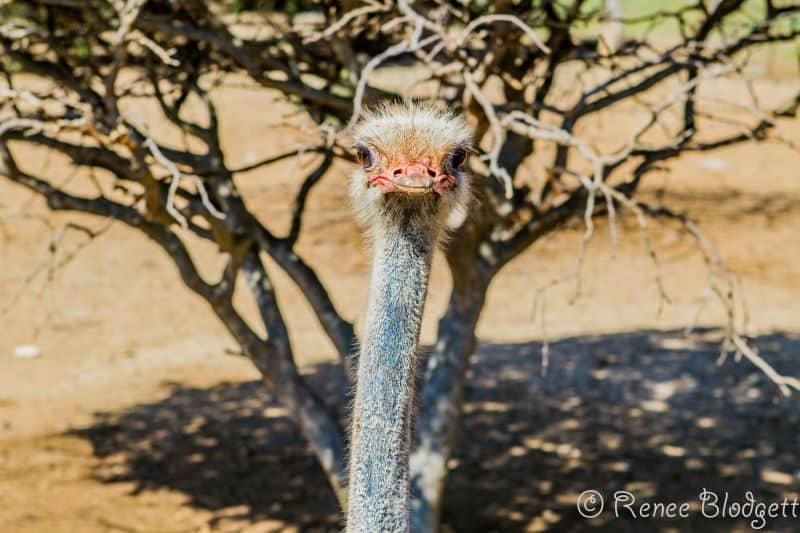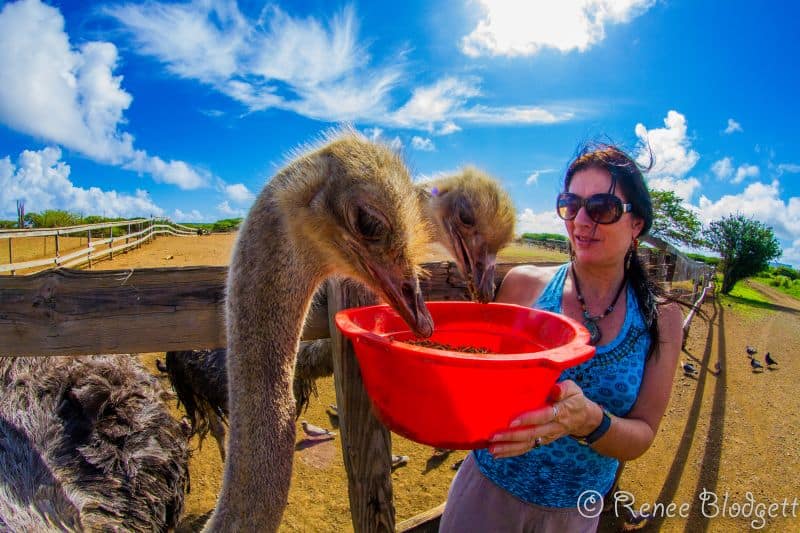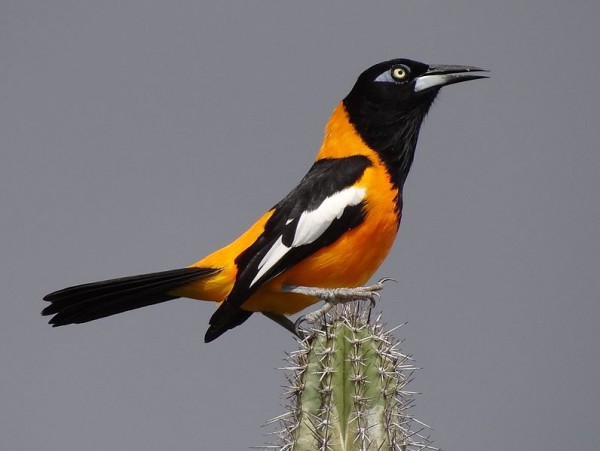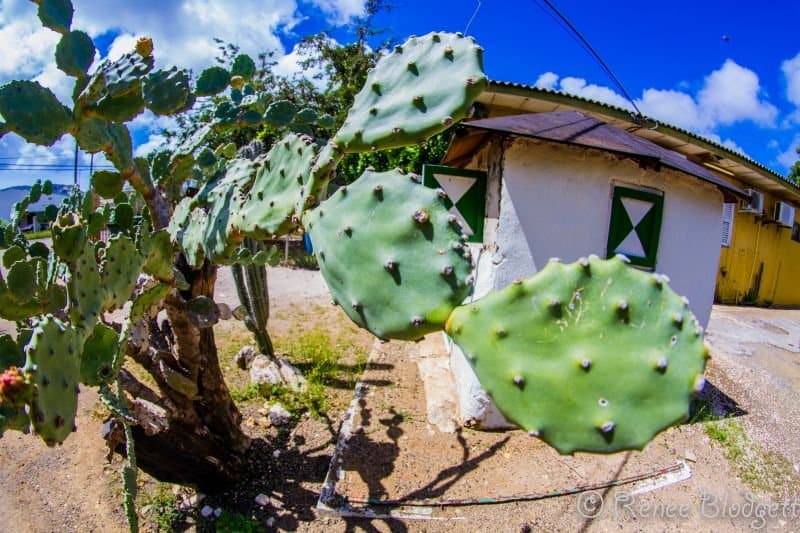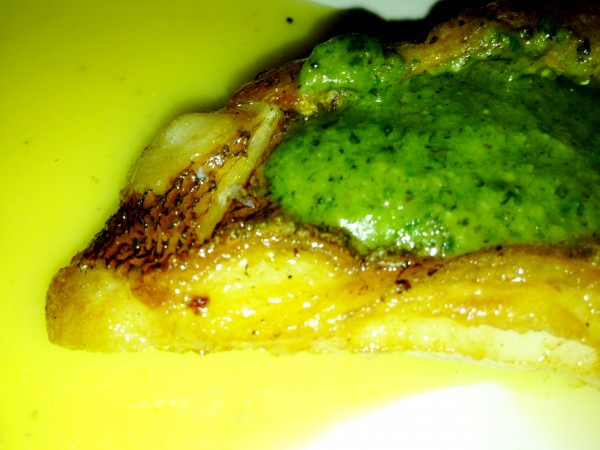I knew nothing of the Dutch Caribbean before a few months ago except for the fact that it existed and that Curaçao was part of it, a small island just 40 or so miles north of Venezuela and 30 or so miles from the luxurious island of Aruba that perhaps more people have heard of on their travels.
Curaçao is a little undiscovered gem, largely because it’s less known, small in size and not yet littered with tall resort properties on every pristine beach. You can still find a piece of beach you can entirely call your own or go on a beach or cliff walk and not see another soul. Bliss!
The island only has one major city, which is historical Willemstad, centrally located towards the southern part of the island however it’s only an hour or so to drive to pretty much anywhere you want to go for sightseeing. Curaçao’s architecture blends Dutch and Spanish influences and Willemstad is on the UNESCO world heritage list because of its many historic buildings. Below is the Fort Amsterdam, now home to the governor.
A local man takes a cigar break from work in the central Fort Amsterdam courtyard.
You can see Dutch influences throughout the island, but most notably in Willemstad’s architecture as demonstrated on Handelskade Street below, which runs alongside the river.
There is a ton to do in Willemstad so be sure to read my write-up on the city, which includes a wide range of activities from art and history to natural herbs for healing, ostriches, Aloe Vera and Curacao food. While we didn’t see any music or dance performances, traditional culture remains alive and costumes are vibrant and fun. Seeing — and participating in — dance is a big priority for my next trip to the Dutch Caribbean region.
While I’m a sponge for cultural activities in any new destination, those who know me well know that I’m a big fan of getting close to nature as often as possible. This scenic little island has tons to do for the avid hiker and water activity seeker — I’d recommend renting a car to explore the island so you can stop as you wish and not be rushed or restricted by a tour.
In the north of the island, Christoffel National Park and Shete Boka National Park are both worth a stop. Christoffel National Park is a protected nature area at the Northwestern end of the island and is most known for its flora and fauna. The park, which covers almost 2,000 hectares includes three former plantations, Plantage Savonet, Plantage Zorgvlied and Plantage Zevenbergen, a mine complex, Newton, and the island’s highest point, Christoffel Mountain.
Shete Boka National Park, also known as Seven Bays to locals, runs along a rugged coastline and begins close to the bottom of Curacao’s highest peak, Christoffelberg. Imagine ten kilometers of rocky coastline, some of which touts some great “crashing wave” action and ten pocket beaches where 3 species of sea turtles are known to lay eggs.
While I did not go this inlet, apparently the most popular one to visit is Boka Tabla, where huge waves roar into an underground cavern. You can get into the mouth of the cavern via a series of steps which are cut into the cavern — what a glorious place to experience the northeast coast. I wish I had more time to spend in Curacao’s natural environment.
Two hiking trails worth noting in the area include Boka Pistol Trail and Boka Wandomi Trail. The first one gives you access to the area where sea turtles come ashore to lay eggs and you can get stunning views of flat limestone hills and Wandomi takes you along rolling lava hills and limestone bluffs to a charming bridge. Both walks are roughly an hour long. Below is a shot of Boka Pistol in all its glory.
This is an example of a boat you can take to go snorkeling in the area, which my crew did the day I was being tortured by a bug.
Nearby is the Blue Room where my colleagues went snorkeling while I suffered through dramatic sniffles and head congestion. The Blue Room is a sea cave near the famous Mushroom Forest dive site. Water mist is snorted out of the waterline cave entry as a wave surges in. How cool is this? You can snorkel over to the cave and swim in. Inside, you’ll find a huge room with air and plenty of overhead space.
Making your way south, you can visit the Country House Museum, which is a restored thatched roofed 19th century manor house that contains fishing, agricultural equipment, antiques, paintings, tapestries and more. It’s worth mentioning the architecture again. While I cited examples of Dutch influenced buildings in Willemstad above, it’s worth noting that the Dutch influence is prolific throughout the island.
Below is a simple country house — while it’s not as colorful as some of the government buildings and shop fronts you see in central Willemstad, you’ll see the European influence regardless with a twist of Caribbean thrown in.
The country houses on Curacao were built in the 18th and 19th century, most of which used as plantation houses at the time. Historically at that time, Curacao boasted roughly 100 small plantations and the centre of each plantation consisted of a country house, where the master and his slaves lived. While a number of these country houses still exist, many of them have been restored and turned into museums, art galleries, restaurants and shops.
Culturally, the Dutch influence mixed with some Spanish and Afro-Caribbean also show up in religious statistics. Roughly 75% of the population is Catholic, but there are also Jews, Moslems, Hindus, Christians and Protestants, although the latter only makes up around 3.2% and Jehovah’s Witness and Evangelical both sit roughly at around 2%.
While Jews may be a very small percentage of locals, worth noting is the Mikve Israel-Emanuel Synagogue, which is the oldest working synagogue in the western hemisphere and has deep historical roots dating as far back as the 15th century.
Another example of architecture and religion combined is shown in the below shot of Church Sint Willibrordust in the town which shares its name.
A small town northwest of Willemstad and close to the coast, it is located not far from the western end of Bullenbaai, which is a bay on the central west coast of Curaçao that covers one sixth of the length of the island’s west coast. It extends from the lighthouse at Kaap Sint Marie in the north to the town of Sint Michiel in the south. Many towns throughout the island boast a beautiful chapel at their center.
That brings me to diversity, which Curaçao has in spades. The culture of Curaçao is apparently represented by its Flag – the blue sky and blue sea are divided by a yellow bar, which represents the sun. The stars represent the island and its tiny uninhabited sister island Klein Curaçao while the white stars signify peace and happiness, and the five points of each star symbolize that the people of Curaçao come from five continents (Africa, Europe, Asia, North and South America).
There are roughly 128,000 people on Curaçao collectively from over 50 countries. Curacao is apparently acclaimed for its well-earned reputation of harmony and tolerance among religion and races. While there are only two official languages (Dutch and Papiamentu), most people also speak English and Spanish, given its close vicinity to Venezuela and the rest of South America.
I’d be remiss if I didn’t talk more about Curacao’s magical coastline and water activities. Below are a few shots of the beach in front of and around the Renaissance Hotel in central Willemstad.
Below is a beach and view from a walk in and around the Hilton property I took one afternoon.
As dusk hits the beaches on Curacao, the sunsets couldn’t be more spectacular. Below are a few shots I took as the sun was beginning to set at Lion’s Dive and Mambo Beach.
And, then there’s exquisite Diving, which I didn’t know before I landed on its soil as odd as that may sound. Curacao lays claim to some of the best scuba diving in the area — world class, my guide tells me.
From Watamula on the west side to Klein Curacao, there are plenty of pristine coral reefs and diverse marine life. Water temperatures range from 78-84 degrees F making it more pleasureable than some of its colder water counterparts and visibility is apparently always around 100 feet or better. There are nearly 100 dive sites, primarily on the leeward side and just a few dive sites on the rougher and more rugged windward side. Below is a shot taken underwater during a Watamula dive.
While we’re talking about wildlife and natural beauty, its worth mentioning Curacao’s Birdwatching culture, something I made fun of before I hit the jackpot and saw a Quetzal on my first trip to Costa Rica and then later gazed into an owl’s eyes from 3 feet away for over a half an hour on the Galapagos Islands. (Ecuador)
While I’ve always been a fan of nature and wildlife (I grew up on a lake in the Adirondack Mountains), I never saw the point of birdwatching — this wasn’t until I began to spot some wondrous looking birds on my travels and suddenly my perspective was changed forever, part of the magic of transformative travel.
While I didn’t take in any birdwatching in Curacao (there simply wasn’t time), I did go to the Ostrich Farm where you can feed, pet and even ride them.
Additionally, the island has some remarkable birds with a lot of influence from neighboring South America. Translation – exotic, vibrant and colorful. Below is a Venezuelan Troupial (Icterus icterus) taken on the west coast of Curaçao.
It’s dry and arid btw even though there’s always a breeze. This means that cacti is found everywhere. The below shot was taken at Dinah Veeris natural herb garden – if you’re into natural herbs and holistic living, then it’s worth a stop – tell Dinah Renee from San Francisco said hello.
Speaking of all things natural, on the east side of the island not far from the Ostrich Farm lies a 10-acre Aloe Vera plantation with over 100,000 Aloe Vera plants, where you can try the pulp, drink the juices and cover yourself in soft Aloe Vera creams and lotions.
There are also plenty of fresh vegetables and fruit throughout the island – it’s not uncommon to find fruit trees growing in the backyards of people’s homes and there are fruit stands where you can have a freshly made drink on a moment’s notice. There’s a great stand in central Willemstad that serves a wide array of choices including Tamarind, which is a popular among locals. Below is an orange tree on the grounds of Dinah’s home, which is the central hub to her herb garden, mentioned above.
Other fun and adventurous things to do in Curaçao include snorkeling, hiking, boating, horseback riding (a great place for this is in Christoffel Natational Park which spans across 4,500 acres and has tons of equestrian trails) and sports fishing.
I didn’t realize sports fishing was so big in Curaçao since it wasn’t on our agenda, but like the “wow” discovery I had in Chilean Patagonia which attracts thousands of sports fisherman each season, there are charter fishing companies who can take you out on the water. For sports fishing fans, popular big game fish on the island include sailfish, marlin, tuna, tarpon, wahoo, snapper, bonefish and dorado.
That also means there’s plenty of fresh fish to eat on Curaçao and not just at the coastal restaurants. Below is a red snapper that was locally caught and pan fried in a plantain creme and a pesto chutney, which I tried at Shore’s American Seafood Grill at the Santa Barbara Resort, located along the coast roughly 45 minutes south of Willemstad.
I stayed at Santa Barbara Resort my first couple of nights on the island – you can read about my experience as well as several other hotel and resort options for trip planning purposes. I had plenty of other incredible food experiences as well so be sure to see my Curacao food write-up for some fun suggestions and photos.
For more great posts on Curaçao and the Dutch Caribbean, check out our Aruba/Bonaire/Curaçao section.
Photo credits: Church Sint Willibrordust photo credit from Curaco-TravelGuide.com, Christoffell National Park from GreenGlobalTravel.com, Boka Pistol shot from pbase.com, Underwater photo of the Blue Room and boat/bird shot both by Aime O’Keefe, Green Country House by jankok-lodges.com, the bright fish underwater by sunrisetravelcuracao.com of a Watamula dive. Bird shot from commons.wikimedia.org/. Flag of Curaçao from Wikipedia.org. All other photo credits including all three sunset shots, the middle one shot on my iPhone: Renee Blodgett.
Note: I was a guest of the Curaçao tourism board but was not paid to or asked to write this article. The choices for topics and what I write is entirely up to me and all opinions expressed are entirely my own.

Renee Blodgett is the founder of We Blog the World. The site combines the magic of an online culture and travel magazine with a global blog network and has contributors from every continent in the world. Having lived in 10 countries and explored over 90, she is an avid traveler, and a lover, observer and participant in cultural diversity. She is also the founder of the Magdalene Collection, a jewelry line dedicated to women’s unsung voices and stories, and the award-winning author of the bestselling book Magdalene’s Journey
She is founder of Blue Soul Media and co-founder of Blue Soul Earth as well as the producer and host of the award-winning Blue Soul CHATS podcast, that bridges science, technology and spirituality. Renee also founded Magic Sauce Media, a new media services consultancy focused on viral marketing, social media, branding, events and PR. For over 20 years, she has helped companies from 12 countries get traction in the market. Known for her global and organic approach to product and corporate launches, Renee practices what she pitches and as an active user of social media, she helps clients navigate digital waters from around the world. Renee has been blogging for over 16 years and regularly writes on her personal blog Down the Avenue, Huffington Post, BlogHer, We Blog the World and other sites. She was ranked #12 Social Media Influencer by Forbes Magazine and is listed as a new media influencer and game changer on various sites and books on the new media revolution. In 2013, she was listed as the 6th most influential woman in social media by Forbes Magazine on a Top 20 List.
Her passion for art, storytelling and photography led to the launch of Magic Sauce Photography, which is a visual extension of her writing, the result of which has led to producing six photo books: Galapagos Islands, London, South Africa, Rome, Urbanization and Ecuador.
Renee is also the co-founder of Traveling Geeks, an initiative that brings entrepreneurs, thought leaders, bloggers, creators, curators and influencers to other countries to share and learn from peers, governments, corporations, and the general public in order to educate, share, evaluate, and promote innovative technologies.

